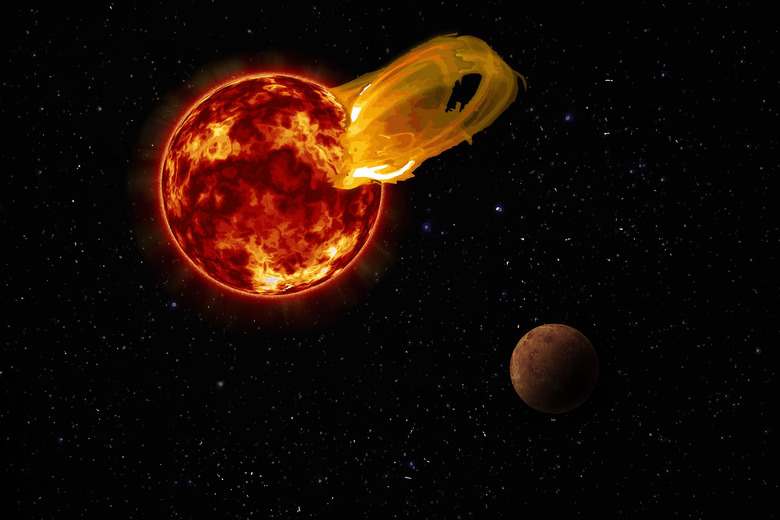Living Near Proxima Centauri Might Be Impossible
- The nearby star Proxima Centauri has long been considered a potential place to search for extraterrestrial life.
- The more we learn about the star, the more it looks like living on a planet near the star might be impossible.
- Space weather, including blasts of charged particles from the star, would make life in the system very difficult.
We're pretty sure that there's no intelligent life in our solar system besides Earth — and you could argue that there isn't any intelligent life on Earth as well, but that's a whole other topic — and unless there's a race of hyper-advanced fish people swimming around deep within the ice moons of Enceladus or Europa, we're going to need to look outside the solar system in our search for extraterrestrial intelligence.
Proxima Centauri, a tiny red star just 4.2 light-years from Earth, would seem like a fine place to look, especially since astronomers believe they've spotted a rocky "super-Earth" orbiting inside of the star's habitable zone. Unfortunately, life around the cool star isn't likely to be pleasant, and based on what astronomers believe they know about the star, searching for life there may be a fool's errand.
In a new article published in The Conversation, researchers Andrew Zic and Tara Murphy lay out the case against life in the Proxima Centauri system. Their concerns are based heavily on the fact that the star itself, a red dwarf that is just a fraction of the size of the Sun, has a feisty personality, and the space weather it produces could wipe out life before it even has a chance to take root.
Proxima Centauri b is the rocky planet that sites right in the middle of the star's habitable region (or "Goldilocks Zone"). Unfortunately, due to the fact that the star is much smaller and dimmer than the Sun, the planet has to be very close to its star in order to be warm enough to be considered habitable, and that puts it at increased risk of severe space weather.
All stars produce some measure of space weather due to the constant outflow of charged particles. Our Sun is relatively "chill" with regards to things like coronal mass ejections (CMEs), which are massive blasts of charged matter that explode from the surface of the star, sometimes catching a planet or two in their wake.
In the case of the red dwarf Proxima Centauri, researchers believe that, like many of its type, the star likely produces regular solar flares and CMEs. Unless Proxima Centauri b managed to form a robust atmosphere and a particularly strong magnetic field, intense space weather events could blast the surface of the planet with radiation that could kill off any life attempting to make a go of it.
Is it still possible that there is life on Proxima Centauri b? Sure, it's possible, but the more we learn about the likely conditions the planet is dealing with, the less confidence researchers have that we'll find life there.
